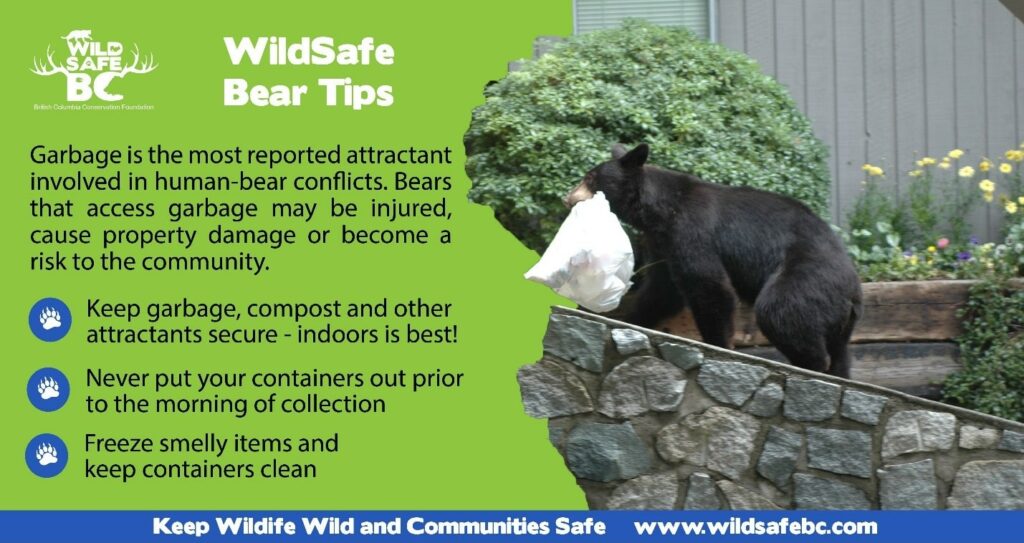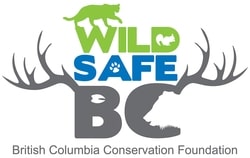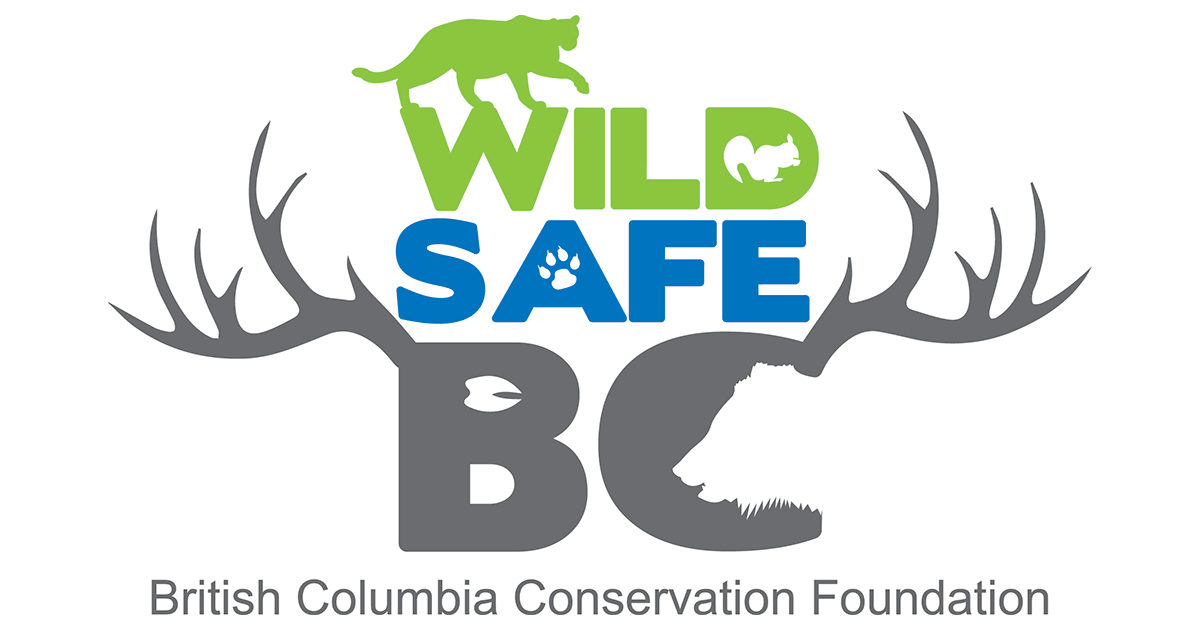Bin Tagging
WildSafe Bin Tagging Facts
- Bin tagging consists of placing removable stickers on containers placed out early, prior to collection.
- Containers set out too early can attract wildlife to your neighbourhood.
- Empty or full, containers left outside provide smells and visual cues that can attract wildlife.
- Bears and other wildlife that receive a food reward may become food-conditioned.
- A food-conditioned animal can put themselves and people at risk and may cause property damage.
What is bin tagging?
Bin tagging is an educational activity performed by a WildSafeBC Community Coordinator. It consists of placing a highly visible and removable sticker on containers set curbside the day before collection or outside of times stated in local bylaws. WildSafeBC provides information on these bylaws but does not enforce them or deliver fines.
Why is it important not to put garbage, compost and other attractants out early?
Garbage is the most reported attractant across the province that leads to conflict with black bears. It also leads to conflict with a variety of other wildlife including grizzly bears, wolves, coyotes, raccoons, skunks, rats and more.
Garbage and compost set on the curb at night is an easy target for a hungry bear and for other wildlife such as raccoons, rats, skunks, coyotes, ravens and even deer. By removing access to these attractants we can help prevent food-conditioning wildlife. Food conditioning is a learned behavior where bears begin to associate people and their property with a food reward. This can lead to safety concerns. With the absence of the food reward, they are less likely to return which helps keep wildlife wild and improve community safety for our neighbours, friends and family. Without addressing the root cause of conflicts, bears may continue to be destroyed as relocation is rarely an effective solution.
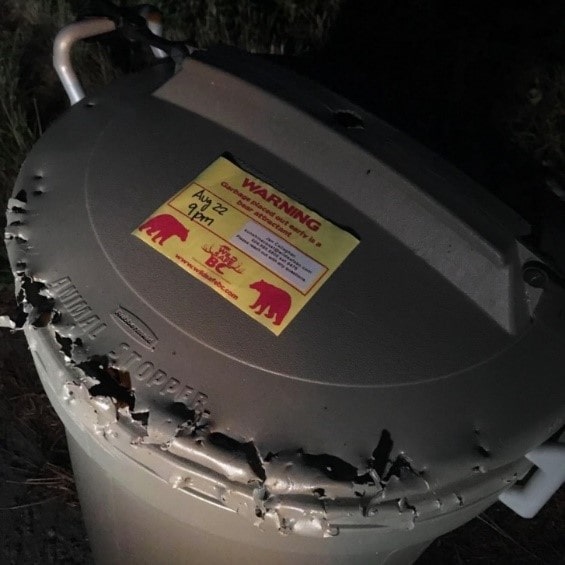
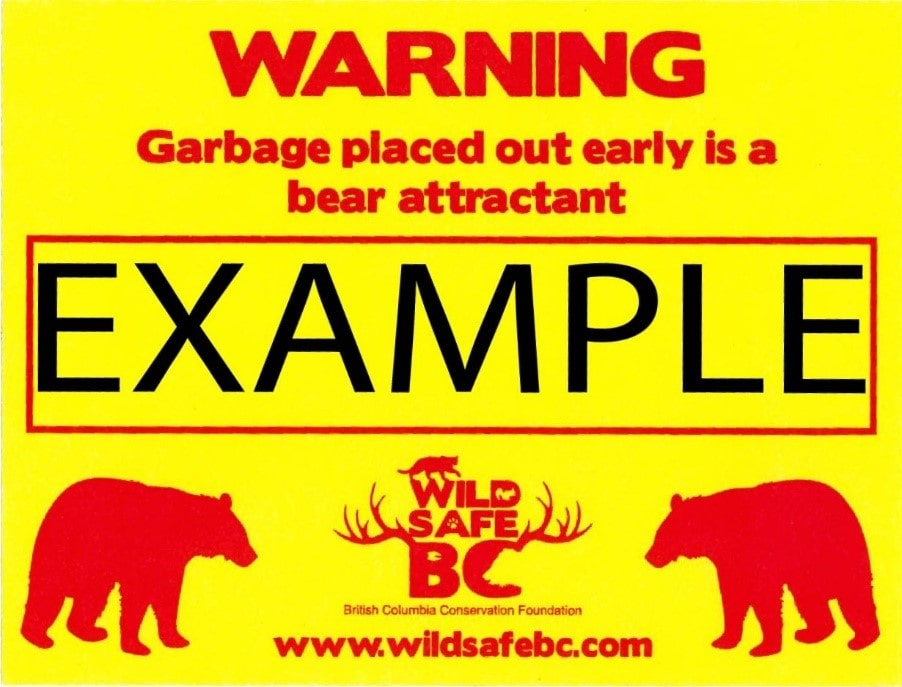
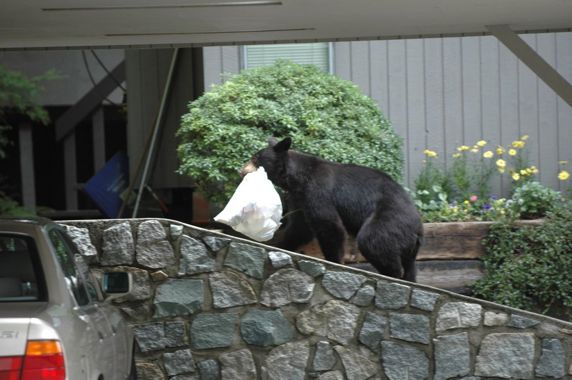
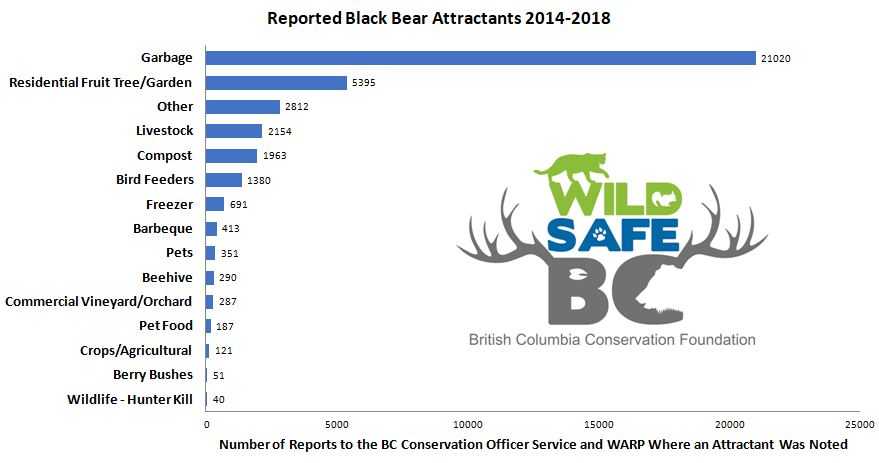
What can I do?
Keep your garbage, compost and recyclables stored in a secure indoor location at all times except on the day of collection. Even an empty garbage can will have smells that may prompt a bear to investigate. If you do not have a secure enclosure and are not able to build one, then keep the container secured to a structure so that it cannot be dragged away, and freeze smelly food waste until the morning of collection. Keep your containers as clean as possible between collection days. Consider purchasing a certified bear-resistant container. While not 100% bear-proof, it will provide that extra layer of protection and help deter most wildlife from accessing it. Even if your community already has these, it is still preferable to keep your containers stored indoors if possible. Some communities may have a communal dumpster or transfer stations available for shift workers.
